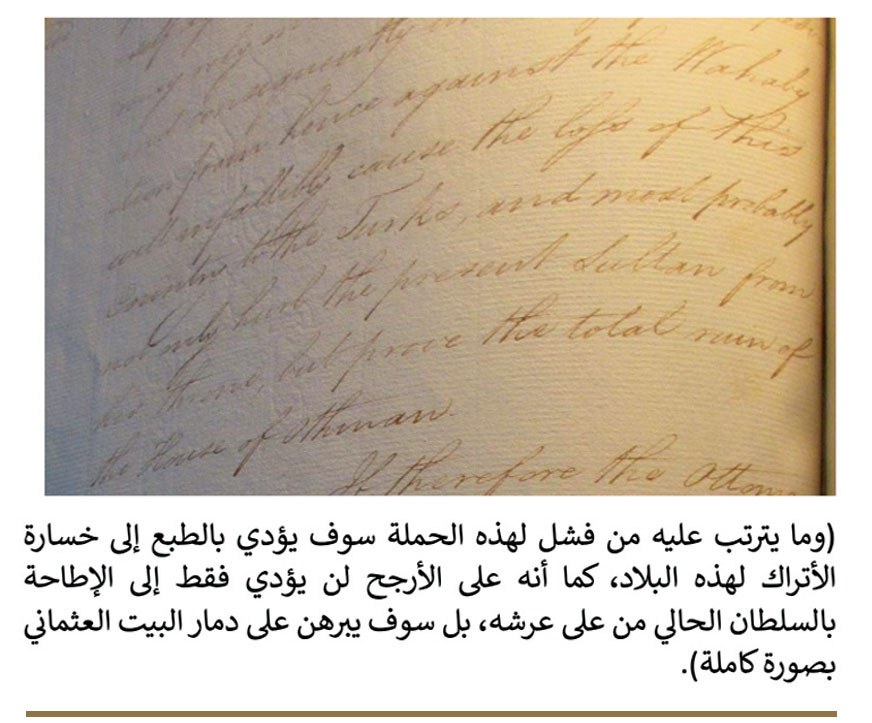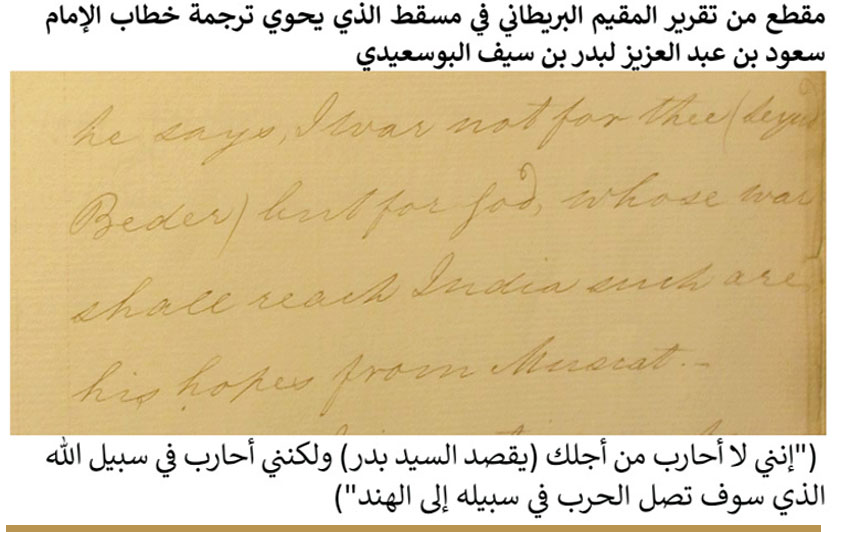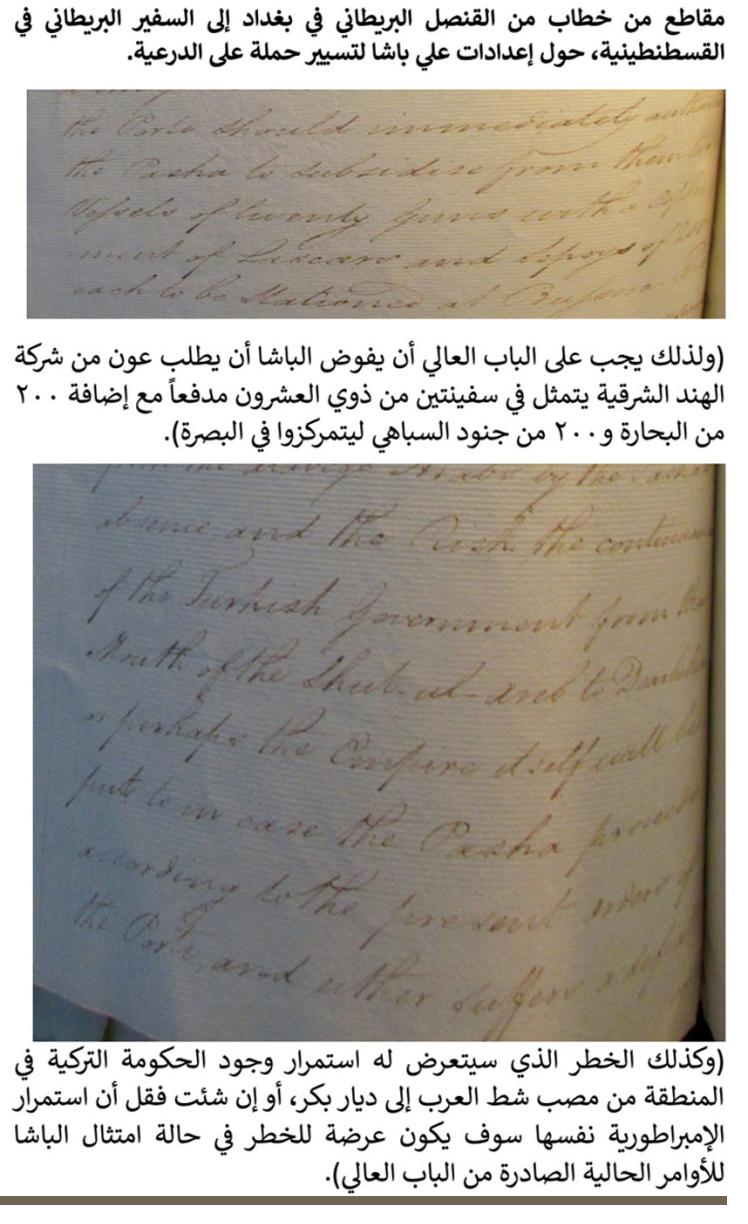Researcher Jawaher Al Saud: The documents of the "poles of the stage" warned of the power of the nascent state and the ambition of its rulers

The “first Saudi state” posed the real danger to the Ottomans and Persian influence
A Saudi researcher specializing in Saudi history and documentary studies, and owning thousands of foreign documents, revealed important aspects in the history of the first central state in the Arabian Peninsula, founded by Imam Muhammad bin Saud, starting from Al-Diriyah, and considered the first nucleus of a young Arab Islamic power that emerged from the center of the island. Arabic 3 centuries ago.
The researcher released important documents, mostly British and Ottoman, and very important messages, representing "the poles of the stage and the scene" at that stage, revealing the rich experience of the Saudi princes in power 300 years ago, and their ambition to establish an empire.
On the occasion of King Salman bin Abdulaziz’s announcement that February 22 of each year would be the anniversary of the founding of the Saudi state as “Foundation Day” and making it an official holiday, Dr. Princess Jawaher bint Abdul Mohsen bin Abdullah bin Jalawi Al Saud singled out “Asharq Al-Awsat” with information. And very important documents, explaining that according to the foreign documents they own, which relate to the history of the first Saudi state, which lasted for a century, Imam Muhammad bin Saud, founder of the first Saudi state, the first Saudi king, as the British documents called him, found the importance of imposing the system that relies on Managing a man who is able to bear the necessary responsibility to take decisive decisions that will provide security and stability for the region, which is the first requirement on which states and governments are based, and which will only be achieved by the unification of the island’s Arabs who were forced by the desert nature to depend on the natural economy with the absence of a central authority , which led to security disturbances, and the Arabian Peninsula was teeming with tribal conflicts and competition between small, mutually exclusive emirates, adding that as a result of the changes that had occurred in the region, and the decisions he took hastened his launch towards these challenges. The difficult task is to get the Arabs of the Arabian Peninsula out of the feud and fighting, and to proceed with his project to unify the Arabian Peninsula.
And she added, Thus, he succeeded in establishing the first nucleus of a young Arab Islamic power that emerged from the center of the Arabian Peninsula. The British documents praised Imam Muhammad bin Saud, who ruled his predecessors since the fall of the Abbasid Caliphate, where instability was a prominent feature in that era, and despite that, the law prevailed and was applied in a very fair manner, especially during the era of his family, and British archive documents confirmed that he ruled for many years, and after His death in 1179 AH (1765 AD) left to his sons a stable kingdom, which enjoyed a great reputation and was respected throughout the island, and the huge buildings, mosques and markets of Diriyah indicated the greatness of the era of Imam Muhammad bin Saud.
The researcher added that Imam Abdul Aziz bin Muhammad took over the reins of power after the death of his father, and thus he is the second imam of the Saudi House. And he strove to complete his father’s activity until he succeeded in changing the balance of power in the Arabian Peninsula, and became a real danger to the Ottoman Empire. He contributed to the expansion of the country under the leadership of his eldest son, Prince Saud, and British records confirmed the success of Imam Abdul Aziz bin Muhammad in tightening his grip on the Arabs of the island. In the east and west in an unprecedented manner, and during his reign, the region enjoyed stability and security.
In this context, Dr. Jawaher Al Saud quoted what the Ottoman sources reported on this imam that he was known for his hardness, strength and determination, transcending all fears of approaching the Ottoman states, and thus bypassing the fear and prestige of the Ottoman Empire in an effort to reach the establishment of a “global” state, as mentioned by the sources Warnings to the Sublime Porte about its increasing activity, which made the Ottoman Empire stress the need to take urgent and strong measures towards it and the need to eliminate its power. For this reason, Sultanate orders were sent to the governor of Baghdad, to take the necessary measures against this danger, and demanded the necessity of firmness to end the issue of Diriyah and the need to coordinate with The other governors and the tribes of Kurdistan and Iraq in order to move and eliminate it, at a time when his campaigns led by his son Saud extended to the Levant and Iraq to the borders of Basra after the Ottoman Empire failed with all its political and military weight in the face of its accelerating influence, after the failure of the campaigns it sent from Baghdad to eliminate Diriyah, Which the British Consul in Baghdad warned about in the report he sent to the British Ambassador in Istanbul on July 29, 1803, and suggested providing financial support British forces of the Ottoman Empire, and expected the failure of any campaign against Diriyah; As the strength of the Baghdad army is 15,000 soldiers against an army of 100,000 fighters who carry swords in their hands and see that death for their cause is martyrdom and glory. He indicated that if the Ottoman Empire insisted on launching this campaign against the Saudis, this would not only lead to failure. The campaign and the Ottomans’ loss of influence in the Arabian Peninsula from the Shatt al-Arab to Diyarbakir, and most likely will lead to the overthrow of the current sultan from his throne and lead to the destruction of the Ottoman house.
The researcher stressed that the Ottoman sources confirmed that after the multiple defeats of the governor of Baghdad, the men of the Ottoman Empire no longer aspired to eliminate the Saudi state at the present time, and were satisfied with pushing the Saudi danger and preserving the state’s borders without neglecting the coming Saudi tide. Those defensive measures and the continuation of the Saudi tide, the door to dialogue with Diriyah was opened through its envoy Adam Effendi, who met Prince Saud in Sharif Ghaleb Garden and delivered a letter from the Grand Vizier inquiring about the motives of Saudi encroachments on Iraq, and Prince Saud bin Abdulaziz reported that the Saudis were fed up The governor of Baghdad’s infringements and his endless campaigns against Ad-Diriyah, and that the capture of Baghdad is an easy matter, but in order not to bring disgrace to the heart of the Ottoman Sultan, he turned away from that.
Dr. Jawaher Al Saud considered that the arrival of Saudi influence to Makkah was a reason that resulted in frequent messages between the Ottoman Sultan and his men of state and the governors of the regions to find solutions to limit the influence of Imam Abdul Aziz or control his ambition or eliminate him, which prompted the state to send a body to investigate him, and pointed out The researcher indicated that the governor of Baghdad, Ali Pasha, was aware of the arrangements to get rid of Imam Abdul Aziz and his son Saud, if he was not the one who prepared for them, and when it was not possible to reach Prince Saud, the dagger that was planted in the back of Imam Abdul Aziz during his afternoon prayers and caused his death in 1218 AH - 1803 AD, and he was not lucky to witness the entry of his armies led by his son, Prince Saud, to Medina and recover it from the Ottomans.
Dr. Jawaher Al Saud stated that Imam Saud bin Abdulaziz bin Muhammad bin Saud, nicknamed Saud "The Great", is the third imam of the Saudi House, and he took power in 1218 AH - 1803 AD. He robbed it of the character in which the Islamic peoples ruled after the restoration of the Two Holy Mosques, and this imam obtained the title of Custodian of the Two Holy Mosques as mentioned in the British documents that confirmed that the Arabian Peninsula was subject to him, as all its sheikhs submitted and obeyed his orders, stressing that his military strength became clear when he affirmed in one of the His speeches were able to supply the governor of Baghdad with 200,000 equipped fighters in case he needed it. During his reign, the Saudi state reached the height of its power, and emerged as an Arab power that represented the greatest challenge to the Ottoman presence in the region, after Imam Saud claimed to oppose foreign occupation on the Arabian Peninsula.
Dr. Jawaher Al Saud explained that the third imam in the first Saudi state succeeded in extending his influence in the Arabian Gulf and Oman, which raised British fears of his increasing activity in those areas, and British reports confirmed that Imam Saud’s ambition is not limited to the annexation of the countries of the Arabian Peninsula, the Levant and Iraq. Only, after the British Consul in Muscat confirmed that Imam Saud aspires to extend his influence outside the Arabian Peninsula towards India, and this was confirmed by the reports of the Wali of Jeddah to the Ottoman Sultan, especially after the Imam himself confirmed this in his speeches to Sayyid Badr bin Saif Al Busaidi, which increased British anxiety after his arrival To its areas of influence on the island and its aspiration to its areas of influence in India, the Ottoman documents confirmed the Persian Shah’s claim that the Ottoman Empire needed to work to eliminate the Saudi tide that reached the areas of Persian influence in the region, which prompted the Ottoman Empire to send an official envoy with the aim of pacifying and confirming the Shah’s mind Work to implement his desire, which confirms the quest of the imams of the Saudi House to establish an Arab Islamic empire that aims to eliminate foreign influence and works to compete with the great powers.
The researcher concluded by saying; The Ottoman Empire realized the coming Saudi-Arab danger, and as a result of its failure to limit its growing influence after losing the Two Holy Mosques and its inability to protect Baghdad and the Levant, the Ottoman Sultan issued orders to his governors in Egypt, the Levant and Iraq to move again in an attempt to eliminate the first Saudi state. Tosun Pasha crossed the sea towards The Arabian Peninsula in 1226 AH - 1811 AD, and his father, Muhammad Ali Pasha, joined him in 1228 AH - 1813 AD. The good tidings reached the Ottoman Sultan with the death of Imam Saud in 1229 AH - 1814 AD in a critical period in the history of the first Saudi state. Where the Ottoman forces were besieging Turbah after the surrender of Mecca and Medina by collaborators with the Ottoman forces.



Source: الشرق الأوسط



